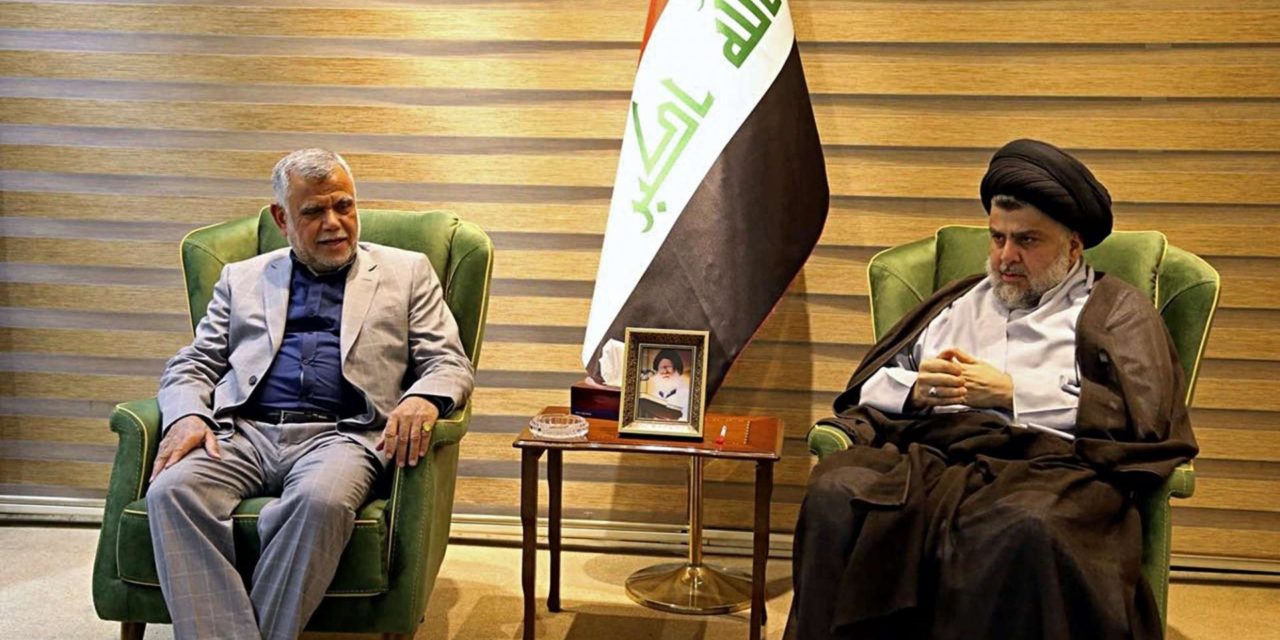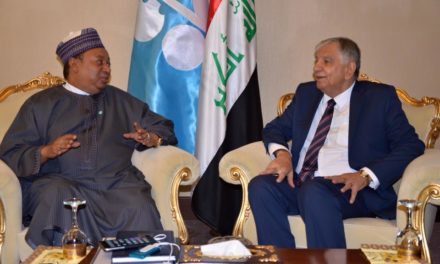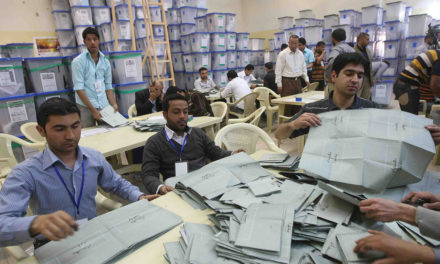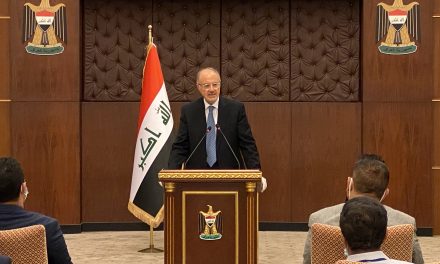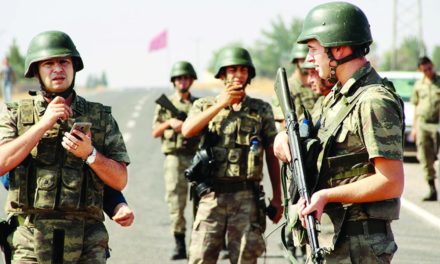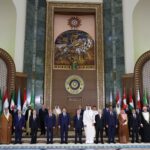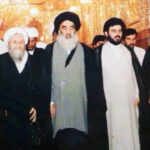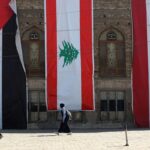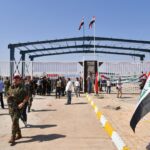Just like the Times Magazine “The End of Iraq” cover that became a symbol of sensationalist journalism failure on Iraq in 2014, there is a new wave of doomsday analysis that started to build up in August and September predicting a new war in Iraq, this time between different Shi’i factions. The Institute for the Study of War, Foreign Affairs, and the Wall Street Journal predicted ‘pro-Iran’ parties like Hadi Al-Ameri’s Fateh and the popular mobilization forces will clash against ‘pro-U.S.’ forces, represented by the likes of Muqtada Al-Sadr’s Sa’eroon and Prime Minister Haider Al-Abadi’s Nasr. This scenario is falsely conceived despite other outlets following suit in pushing this narrative.
Political events taking place in October reveal a much different story unfolding in Iraq. The parliament speaker, Mohammed Al-Halboosi was chosen through an agreement between Fateh and Sa’eroon, the supposedly two major forces that are meant to go to war against one another. President Barham Salih was chosen in a different manner, away from the back room dealings, which defied the current norm of agreements between bloc leaders. This was made possible through the votes of individual members of parliaments (MPs) and their convictions, rather than predetermined agreements taking place before MPs voted. The same day the president was selected, he designated Adil Abdul-Mahdi, a compromise candidate from both sides as prime minister.
After multiple governments formed, the political process is more stable than most analysts give credit. Nevertheless, while at the moment the political scene in Iraq is overwhelmed with the final steps of the government formation process, it is expected that any further escalation in Southern Iraq will trigger once more a burst of similar doomsday analysis.
Nobody can deny the influence of both Iran and the U.S. in Iraq, or the fact that some groups tend to be closer to one of the conflicting powers. But while all the developments in Basra and other cities in the last month were worrisome, this does not mean that there will be another civil war in Iraq, whether it is between Shia or other factions of Iraq.
The issue with this type of analysis is that those pushing it insist on viewing all developments in Iraq in light of the rivalry between Iran and the U.S. Such an approach always misses the nuances and narrow interests and pursuits of the major players involved, which often do not fit with those of their supposed patrons. This issue alone warrants labeling such analysis as flawed. More specifically, the assumptions that today there are clear-cut political axis representing the interests of Iran and the U.S. is inaccurate and almost insulting to Iraq observers and Iraqis. The government formation process, although not finalized yet, is clear proof that the competing political parties in Iraq have far more options than that of going to war with each other.
Another critical flaw with such analysis is that it does not take into consideration the role of the Marjaiya. True, Ranj Alaaldin for example mentioned the former as being the “last chance of Iraq” and counts on a, “more proactive and interventionist role from Ayatollah Sistani,” to save the country from a civil war. Nevertheless, the situation would never get to the level of a civil war in the first place without the Marjaiya exercising all its leverage to prevent it. While not all the Shia factions in question follow the Marjaiya of Najaf or even acknowledge it, they certainly respect its influence and are aware of the power it possesses.
More importantly, even in the worst and most violent stages of the sectarian conflict in Iraq, it was never a full-blown civil war. The country continued to have a political process and the majority of the Iraqi people despised the conflict and refused to take part in it. Despite the view of many analysts that the events of last October would be the major source of conflict that would lead to the next civil war in Iraq, it showed that bringing Kirkuk under federal control happened relatively peacefully, and that both sides worked hard to avoid any further armed conflict. It is therefore very far-fetched that an internal war will erupt between the Shia themselves when sect and ethnicity failed to ignite such a war in the past between Iraqis from diverse backgrounds.
Alaaldin also mentioned in his piece that “Sunni Arabs are unlikely to mobilize for the foreseeable future” because “[t]hey are too bruised, bloodied, and fatigued as a result of countless wars”. The same argument would apply to the Shia Arabs who have been the targets of a long terror campaign and conducted the majority of the war against Da’ish. These people have sacrificed through victims of terrorist attacks and martyrs fighting Da’ish, so how likely is it that they want more war?
Even the “battle-hardened militias”, as Alaaldin and many others are worried about, have historically moved towards becoming more political and being engaged in elections, not the other way around. The formalization of the PMF, the government’s reaction towards their challenges, and the Marjaiya’s clear stances against bearing weapons outside of state control has kept them at bay. We are not close to a resolution of their issue, but the objective observer has to acknowledge that the trend in Iraq is gradually towards limiting their influence, with the public and the religious authority supporting these efforts.
The reality is that the Iraqi people are exhausted from war and want better services. This demand unites the people from the north to the south. While there are better ways to achieve long-lasting change, the real reasons why people demonstrate in Basra are services and corruption, not just political grievances nor the craving for another conflict. It is true that some actors want to capitalize on the demonstrations for political aspirations, and the violence might lead to a security vacuum which political factions or proxies will use to settle scores with rivals. However, the original nature of the protests remains peaceful, and this is why it is vital to preserve their reformative and democratic nature and protect them from violence and under-the-belt politics.
The only war the demonstrations in Basra will lead to is a war against corruption and complacency of the political elite, and it is the only war the Iraqi people are willing to fight today. As much as both Iran and the U.S. have influence, nobody in Iraq is willing to fight a violent war on their behalf.

Muhammad Al-Waeli
Muhammad Al-Waeli is an Iraqi commentator on political and social issues. He is currently doing a PhD in Human Resource Management and is interested in politics, media, and development.

